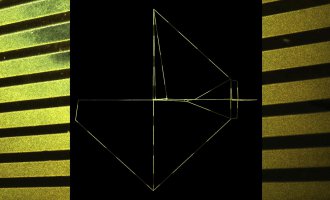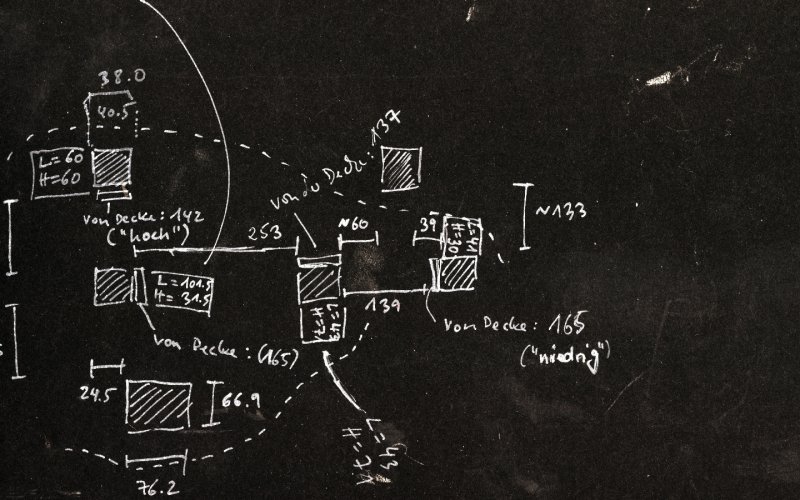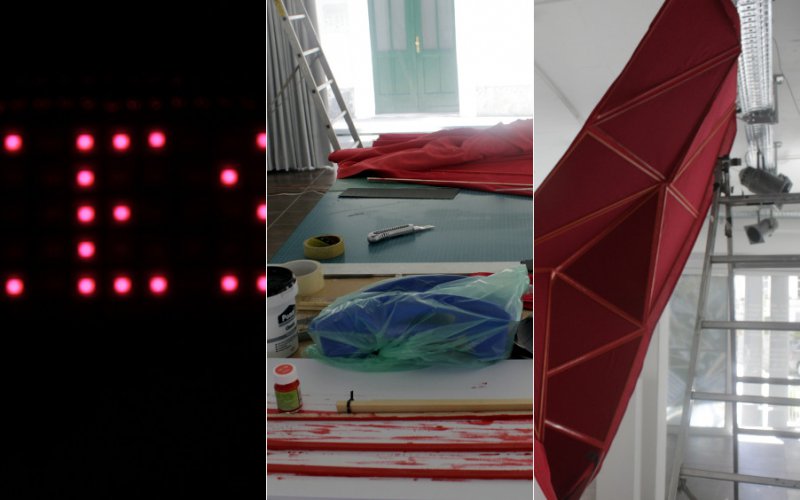esclab: Imperfect Reconstruction

- Worklab
Despite all of us already living in Graz, the kind of "mini residency" we undertook at esc nevertheless produced the same effect that one hopes for in a residency---to liberate oneself from otherwise distracting elements, and to return again and again to the same place, the same thought, or the same tangle of thoughts. There is a tremendous difference between experiencing a space through the visits of other exhibitions, and building up, step by step, an understanding for it through the daily recurrence, through settling in, developing all the possible perspectives and comprehending the dynamic that unfolds around the glass box. Unlike the setup phase of an exhibition, all things are still in flux, may be discarded, fall into place.
For us, it was important to be able to already experiment with prototypes of the arrangement. One of them was the mesh structure that will form an inner and an outer skin of the exhibition. To anticipate the manufacturing process, the suspension in the space, the impression of the video projection and background illumination. To learn how flexibly we can determine the shapes during setup. Another one was the inner space created by this skin, a space that hitherto was only vaguely defined. During our stay at esc, we began to understand this inner space as complementary to the surrounding space, and we gave it, after some abandoned experiments, a self-sufficient structure based on cubic elements. Only after having a prototype of the screen elements for the inner space at hand, we could really comprehend the specific materiality of the TFT and the response it creates together with the digital image data.
Throughout our stay, our thoughts revolved around how we should deal with the existing configuration of the room; the quadratic columns, the large column, the cable conduits, the window with the sanded stripes, etc. The meaning of "Imperfect Reconstruction" had always been that all the elements one introduces, all the elements that one develops, integrate with the intersecting series of previous instances and instances to follow. This led, among other things, to the creation of video material that transposes a prior conceived image process to the moving image, yielding peculiar outcomes. The understanding of the inner space of the installation as a space refracted into multiple channels, led to a series of long term exposures from varying perspectives, inadvertently addressing the question of the sanded window stripes, as well as the rhythmic structure of the light and the passers-by as regarded from inside towards outside.
This permanent gaze to the outside also helped us to better understand what could happen to the exhibition when, on December 16, it will be put to "hibernation", making it accessible only by looking through the windows from the outside. Small speakers mounted outside, a remainder from a prior event at esc, were adjusted and extended to eight channels, and the environment was observed under the effect of different sound materials.
In retrospect, it is clear that for us the esclab was both an experimentation space but also a process of clarification, at the end of which many preliminary decisions and ideas have been found that could only have resulted from a work in situ.



